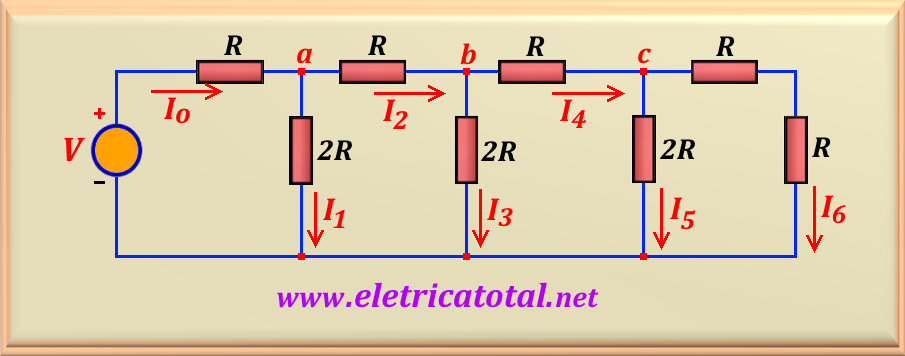Problem 10-19 Source:
Problem 2.24 - page 66 - IRWIN, J. David -
Book: Análise de Circuitos em Engenharia - 4ª edição - Ed. Pearson Education do Brasil - 2013.
The circuit shown in Figure 10-19.1 is used in digital-to-analog
converters.
Determine expressions for I1, I3
and I5 in terms of Io.
Solution of the Problem 10-19
Note that from point c flows the current I6 and circulates
through two resistors connected in series of values equal to R each. This
association results in a resistor of value
2 R and is in parallel with the other resistos of 2 R where it
circulates I5. As a result of this parallel we obtain a resistor
of value R. Between point b and point c we have a resistor of
value R that added to the equivalent resistance of point
c , a equivalent resistance of value 2 R results. Therefore, we realize
that there will be a repetition of the situation described above and each point
always "sees" the value R. Thus, we easily conclude that the equivalent
resistance that the circuit offers to the voltage source V has the
value 2 R . Therefore, the value of Io it is given by:
In relation to point a, we have an equivalent resistance of 2 R
where it circulates
I2. Therefore, it is evident that
I1 = I2. So we can write the value of
I1 in terms of Io as:
Following the same line of reasoning, we easily concluded that I3 = I4 =
I1/ 2. So, writing I3 in terms of Io, we have:
So, without difficulties, we have:


